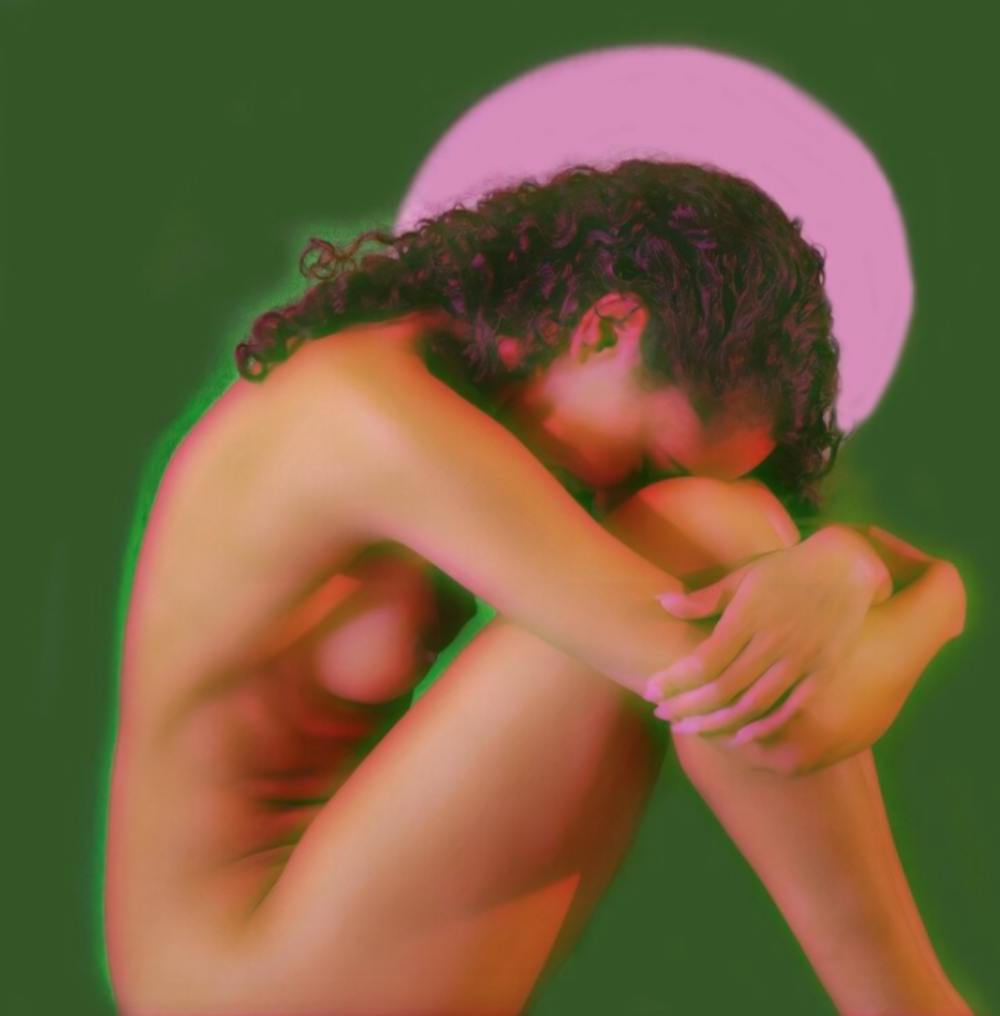“Scream in agony,” Ruby Bowman ’21.5 said in our FaceTime interview. “That’s what I’d tell the women I photographed.”

"eat me" by RUBY BOWMAN.
For her most recent project, “Behind Her Bedroom Door,” I imagine that Bowman, an Austin-based artist who is perpetually donned in pink, used this prompt to coax an unbridled openness — unrestrained by expectations of femininity — out of the women she photographed.
Road-tripping through six states amid the global pandemic, Bowman explored what she refers to as the “isolated female mind.” In her journey, she photographed the rawest moments of real women — not models, she specified — during the era of Covid-19. She aimed to capture the deprivation of physical contact and the disconnect between mind and body during such secluded times.
Eighteen of Bowman’s photographs are exhibited in Parkhill Gallery, a Chicago-based brick-and-mortar gallery opened by Hunter Parkhill ’21.5. While currently closed to the public due to Covid-19, Parkhill Gallery is exhibiting Bowman’s pieces online.
When I first clicked onto the virtual gallery, I was surprised by the nudity in Bowman’s photographs (I just wasn’t expecting it!). Many of her subjects, all feminine, had stripped down in front of her camera to expose their bodies and bare their souls.
With subjects that might typically be considered suggestive, Bowman has instead produced vibrant and ethereal photography that de-sexualizes the female body. Part of this rawness, she shared, can be attributed to her subjects “letting loose” and screaming.
“I was so nervous,” Bowman said about the vulnerability of her models. “But I wanted my art to be more than fruity and frilly. I wanted it to be real.” By encouraging models to scream — whether that to celebrate joy, release trauma or shed frustrations — Bowman pinpointed blunt emotion in her work.
Using soft yet vibrant tones, Bowman captures breasts, tattoos and hands — all of which are sexualized in popular media — in front of fluorescent backgrounds (courtesy of a greenscreen) and with ghost-like blurs. Mounted against the cream-colored walls of the gallery, her art exposes an unconventionality in nudity, silently denouncing air-brushed images in favor of stretch marks and tan lines.
While some of Bowman’s photographs certainly have erotic undertones, they function as a celebration of the female body rather than a form of objectification. Representing both the pain and resilience of the isolated female self, she lets us in on the intimacy of femininity and the seclusion that comes from limited contact with others.

"lilacs for my mother" by RUBY BOWMAN.
The exhibition also explores themes of depression and anxiety. Holding a bedsheet, the subject in “lilacs for my mother” appears to be disconnected from the world outside her bedroom. The site of quarantine, the bedroom represents an overwhelming entrapment — both figurative and physical — and its psychological effects. While Bowman’s photographs are “pretty and pink,” as she describes them, she simultaneously uncovers the “sinking feelings” of Covid-19 isolation.

"the breaking point" by RUBY BOWMAN.
The last photo of Bowman’s exhibition is “the breaking point.” The woman photographed, hunched over with her forehead on her knees, looks like she might crack if you come too close. I was a little surprised, as I thought that perhaps Bowman’s collection might end with a rebirth, a resilience, an elasticity. That is, at least, what I wanted in my own life.
“‘the breaking point?’” I asked the artist. “That doesn’t leave me with much optimism amidst this pandemic.”
“Do you see that?” Bowman replied calmly, pointing to the glowing pink halo around the woman in “the breaking point.” “That’s hope.”
Comments




